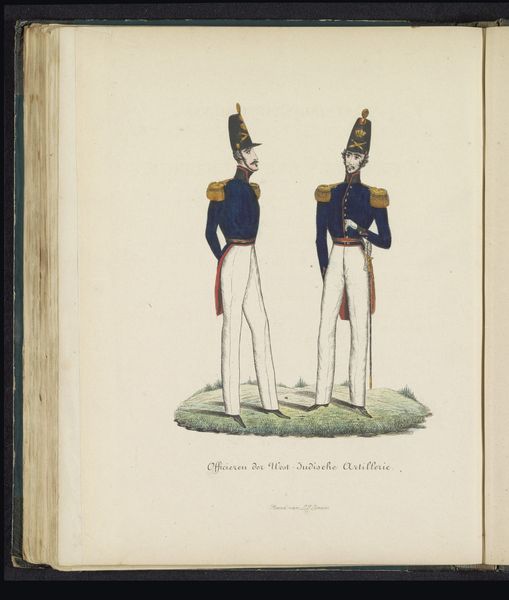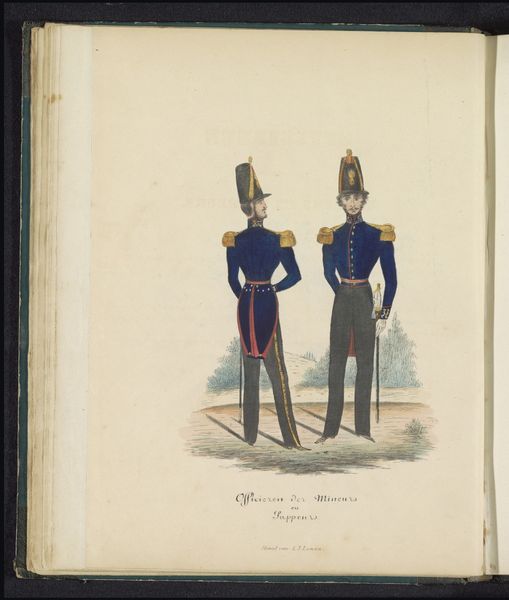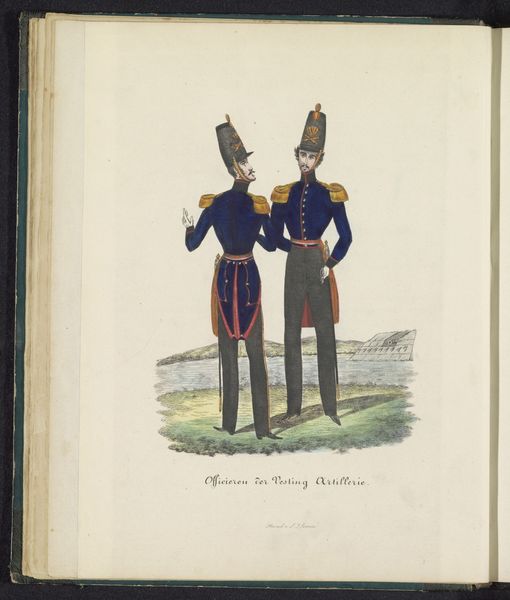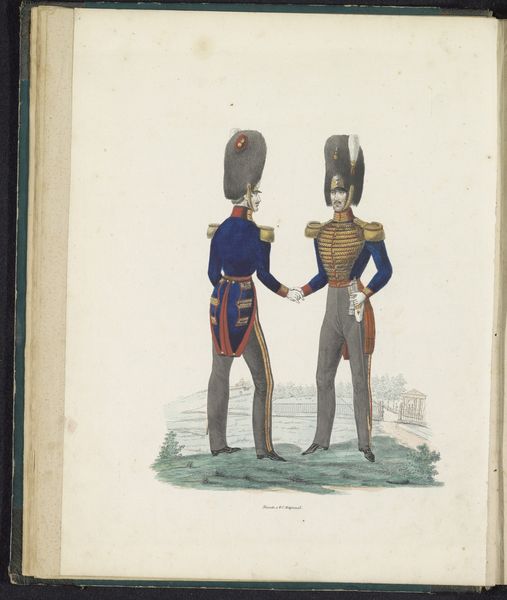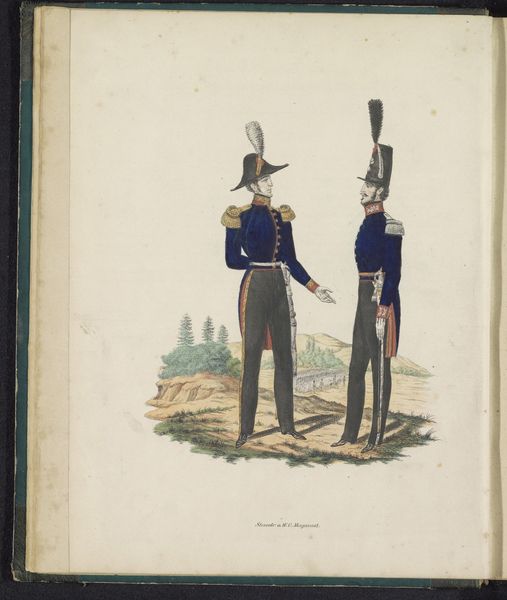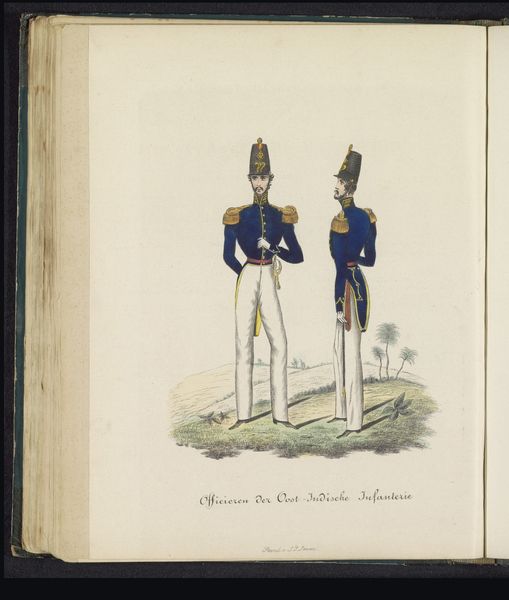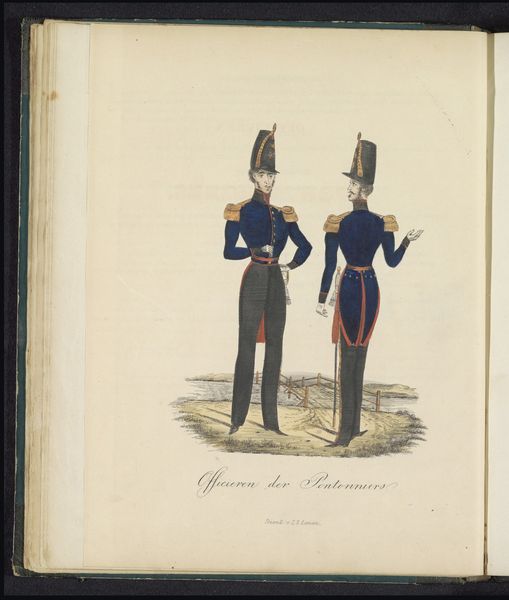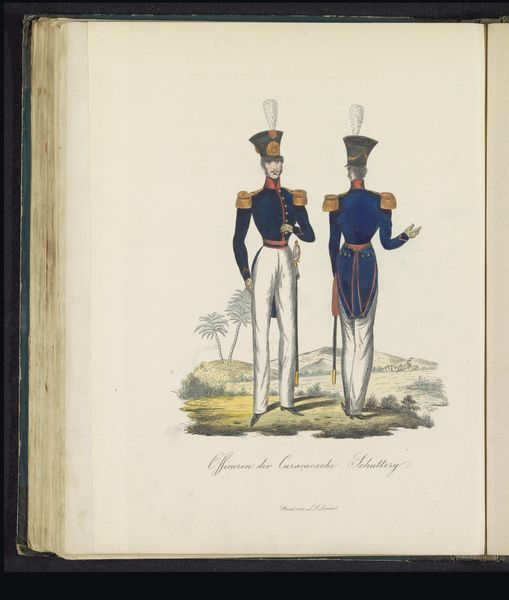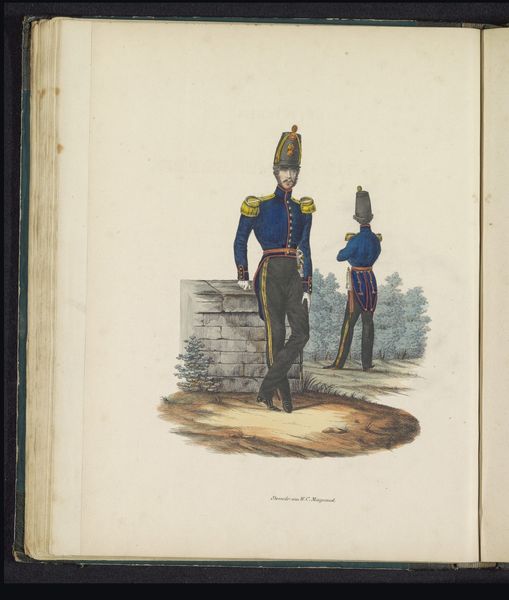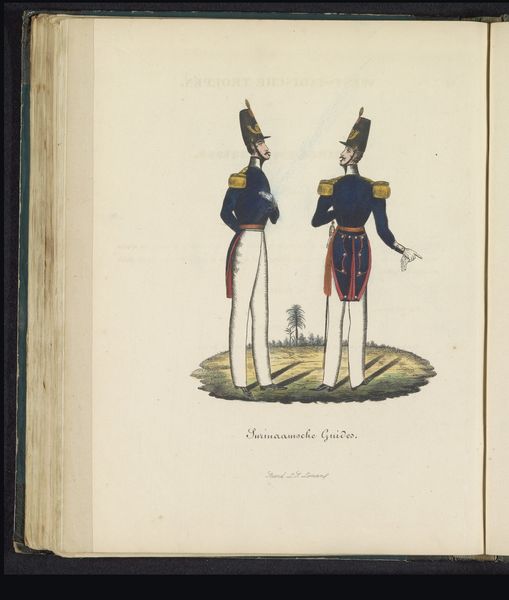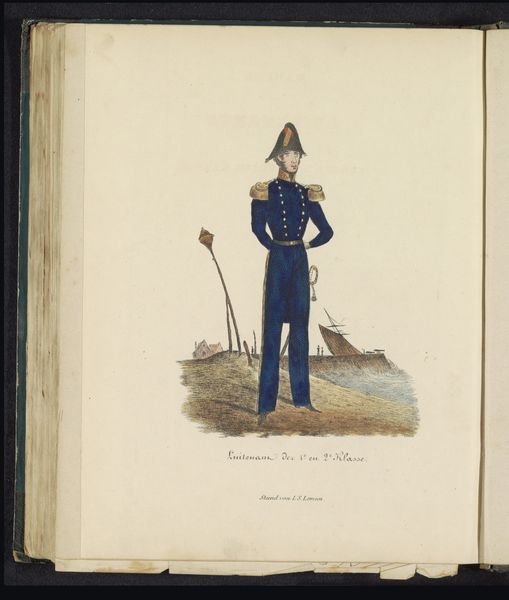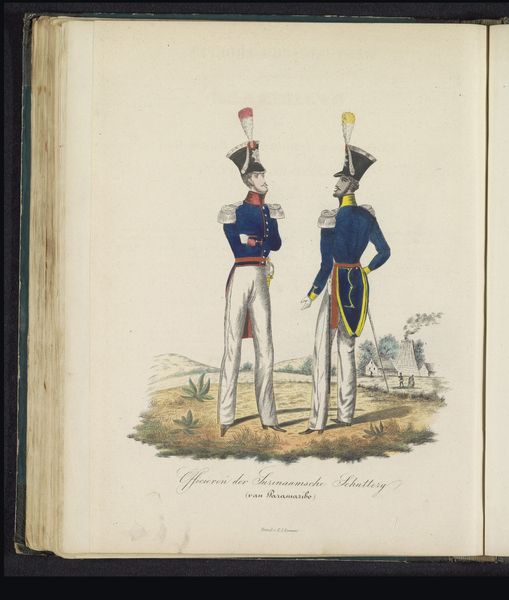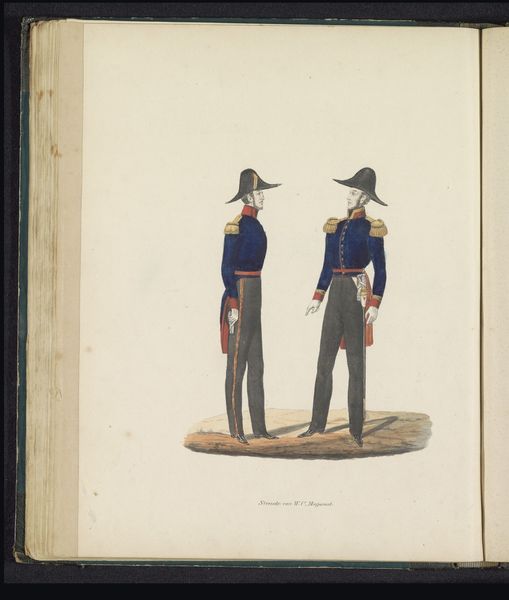
drawing, coloured-pencil
#
portrait
#
drawing
#
coloured-pencil
#
figuration
#
coloured pencil
#
watercolour illustration
#
history-painting
#
academic-art
#
realism
Dimensions: height 270 mm, width 200 mm
Copyright: Rijks Museum: Open Domain
Editor: Here we have "Uniform van de officieren van de infanterie, 1845" by Willem Charles Magnenat, a coloured-pencil drawing. I’m struck by the detail in the uniforms, particularly considering it’s a drawing and not a painting. What insights can you share about this piece? Curator: Looking at this drawing, I immediately consider the context of its creation. It's 1845, and we see a focus on the meticulous depiction of the uniforms, clearly signaling status and power. But what does this level of detail tell us about the production of these uniforms themselves? Editor: So, you're thinking about the labor behind the finery? Curator: Exactly! Consider the tailors, seamstresses, and those involved in sourcing the materials – the fabrics, dyes, and metals. Who were they? What were their working conditions? The drawing highlights the *finished product* for the officer class, but at what cost were these uniforms made? Is it meant to represent power or the exploitation behind it? Editor: That's fascinating, a whole other layer I hadn't considered. So, by focusing on the material reality behind the image, we start questioning the social dynamics it represents? Curator: Precisely. The artwork becomes a starting point to examine the complete commodity chain: extraction, manufacture, distribution, consumption and disposal, to understand more profoundly what such illustrations represent. It challenges the viewer to see beyond the surface and question the systems of production that uphold societal hierarchies. What have you taken away from this exploration? Editor: I definitely see it in a new light. It’s not just a drawing of uniforms; it’s a doorway into a complex web of social and economic relationships in 1845. Curator: Indeed, viewing art through a materialist lens brings attention to aspects that standard art historical methodologies might overlook, revealing valuable insights into power structures and economic inequalities.
Comments
No comments
Be the first to comment and join the conversation on the ultimate creative platform.
